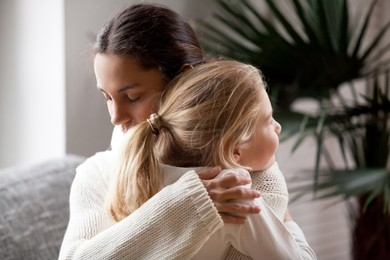In Alberta, Canada, child custody arrangements focus on the best interests of the child. While the language has shifted from traditional custody terms, such as “joint custody” and “sole custody,” the idea behind it remains the same.
Let’s explore the different parenting arrangements and their implications, so that you’re better informed of the choices available.
1. Sole or Full Custody
Sole Custody
Sole custody designates one parent as the primary decision-maker. This parent has the authority to make major life decisions, such as education and healthcare, while the non-custodial parent may have visitation rights.
Sole custody is often considered when concerns arise about the non-custodial parent’s capacity to provide a stable and secure environment for the child. Factors like a history of abuse, neglect, or substance abuse play an important role in determining whether sole custody is appropriate.
However, visitation rights for the non-custodial parents may still be granted under these circumstances.
Full Custody
Full custody is often used interchangeably with sole custody. The custodial parent retains decision-making authority and primary responsibilities for the child, with limited roles for the non-custodial parent.
In Alberta, the distinction between sole and full custody might not be of utmost significance, as both arrangements emphasize the custodial parent’s authority and responsibilities.
2. Joint Custody
Joint custody involves both parents sharing decision-making responsibilities for their child’s upbringing. This arrangement emphasizes collaborative decision-making for significant life choices, fostering a balanced role for both parents.
Joint custody thrives when parents can effectively communicate and cooperate with each other. This arrangement upholds the value of involving both parents in the child’s life and promoting stable transitions between households. Tailoring the arrangement to the family’s unique dynamics ensures the child’s best interests remain paramount.
3. Shared Custody
Shared custody goes a step further, incorporating an almost equal distribution of time and responsibilities between both parents. Children in shared custody arrangements spend substantial time with each parent, often following a schedule that alternates between households at regular intervals.
This arrangement aims to provide a balanced distribution of parental duties and presence in the child’s life. The shared nature of responsibilities requires parents to work together, so that there’s equal participation in decisions and parenting duties.
Shared custody prioritizes consistency and meaningful relationships with both parents to support the child’s emotional well-being and overall development.
4. Split Custody
Split custody is tailored for families with multiple children, where each parent has primary custody of at least one child. This approach acknowledges that each child has unique needs and relationships with both parents.
Consequently, split custody recognizes that the best arrangement for one child may differ for another. Split custody is most relevant when children’s individual needs diverge significantly. While this approach allows children to maintain strong relationships with both parents, it can lead to siblings being separated.
Courts usually weigh individual children’s needs and relationships when assessing the feasibility of a split custody arrangement.
Parenting Time and Decision-Making Responsibility
Parenting time is the time when each parent has primary responsibility for the child. This includes when the child is in school or daycare. During their scheduled parenting time, each spouse has the sole authority to make decisions affecting their child.
Parenting time schedules can be fixed with specific days and times or open with flexible schedules determined by each parent depending on the needs of the family.
In some cases, the parenting agreement may call for supervised parenting time where the child is under the supervision of another person such as a social worker or another relative. Supervised parenting time is only used when there is a concern about the well-being of the child.
Decision-making responsibility varies between sole, joint, and split arrangements. Sole responsibility grants one parent the final say, while joint involves shared decisions, and split may apply when children have different needs. Decision-making arrangements can be tailored to the family’s specific circumstances; they do not have to fit neatly within one of these models.

Changing Parenting Agreements
Parenting agreements can be changed. In Alberta, a parenting agreement doesn’t have to be changed in court. If you want to change the agreement, you can talk to the other parent to try and negotiate a new agreement or use family mediation if negotiations are difficult.
Conclusion
Navigating child custody arrangements in Alberta requires careful consideration of these options to ensure the best interests of the child.
If you seek legal guidance on custody matters and need Family Lawyers in Edmonton, contact KBL Law. Our experienced team is here to support you through this challenging journey, prioritizing the welfare of your children and your family’s future. We understand the intricacies of Alberta’s Family Law Act and the federal Divorce Act, ensuring that your child’s well-being remains paramount in every decision-making process. Your family’s peace and stability are our top priorities.
